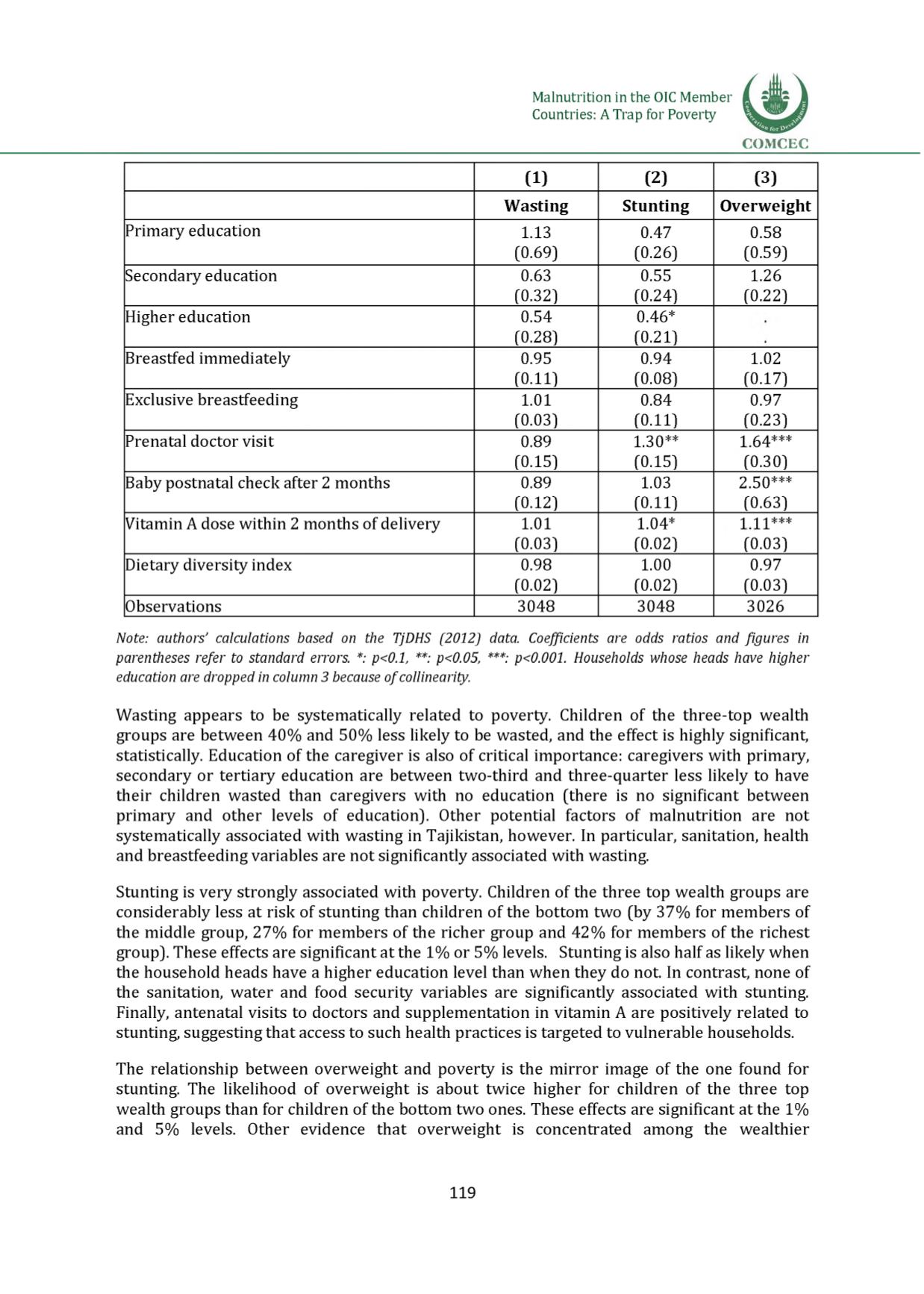

Malnutrition in the OIC Member
Countries: A Trap for Poverty
COMCEC
(
1
)
(
2
)
(3)
Wasting
Stunting Overweight
Primary education
1.13
(0.69]
0.47
(0.26]
0.58
(0.59]
Secondary education
0.63
(0.32]
0.55
(0.24]
1.26
(0.22]
Higher education
0.54
(0.28]
0.46*
(0.21]
Breastfed immediately
0.95
(0.11]
0.94
(0.08]
1.02
(0.17]
Exclusive breastfeeding
1.01
(0.03]
0.84
(0.11]
0.97
(0.23]
Prenatal doctor visit
0.89
(0.15]
1.30**
(0.15]
1 64***
(0.30]
Baby postnatal check after 2 months
0.89
(0.12]
1.03
(0.11]
2.50***
(0.63]
Vitamin Adose within 2 months of delivery
1.01
(0.03]
1.04*
(0.02]
1
1 1
***
(0.03]
Dietary diversity index
0.98
(0.02]
1.00
(0.02]
0.97
(0.03]
Observations
3048
3048
3026
Note: authors' calculations based on the TjDHS (2012) data. Coefficients are odds ratios and figures in
parentheses refer to standard errors. *: p<0.1, **: p<0.05, ***: p<0.001. Households whose heads have higher
education are dropped in column 3 because of collinearity.
Wasting appears to be systematically related to poverty. Children of the three-top wealth
groups are between 40% and 50% less likely to be wasted, and the effect is highly significant,
statistically. Education of the caregiver is also of critical importance: caregivers with primary,
secondary or tertiary education are between two-third and three-quarter less likely to have
their children wasted than caregivers with no education (there is no significant between
primary and other levels of education]. Other potential factors of malnutrition are not
systematically associated with wasting in Tajikistan, however. In particular, sanitation, health
and breastfeeding variables are not significantly associated with wasting.
Stunting is very strongly associated with poverty. Children of the three top wealth groups are
considerably less at risk of stunting than children of the bottom two (by 37% for members of
the middle group, 27% for members of the richer group and 42% for members of the richest
group]. These effects are significant at the 1% or 5% levels. Stunting is also half as likely when
the household heads have a higher education level than when they do not. In contrast, none of
the sanitation, water and food security variables are significantly associated with stunting.
Finally, antenatal visits to doctors and supplementation in vitamin A are positively related to
stunting, suggesting that access to such health practices is targeted to vulnerable households.
The relationship between overweight and poverty is the mirror image of the one found for
stunting. The likelihood of overweight is about twice higher for children of the three top
wealth groups than for children of the bottom two ones. These effects are significant at the 1%
and 5% levels. Other evidence that overweight is concentrated among the wealthier
119
















